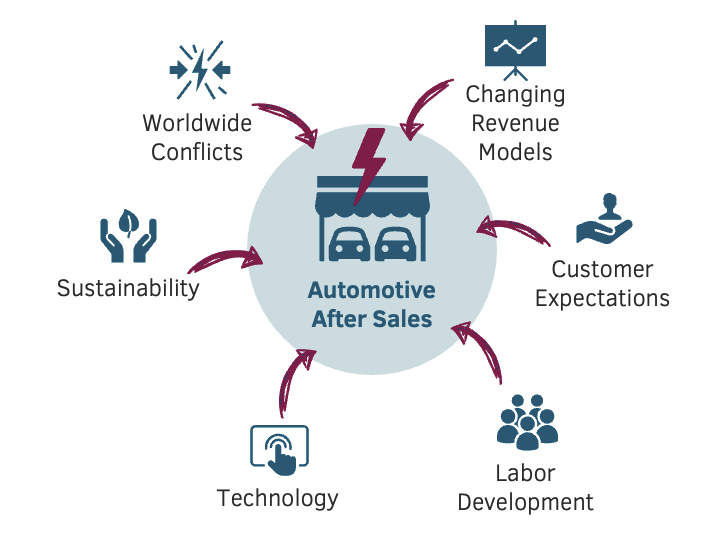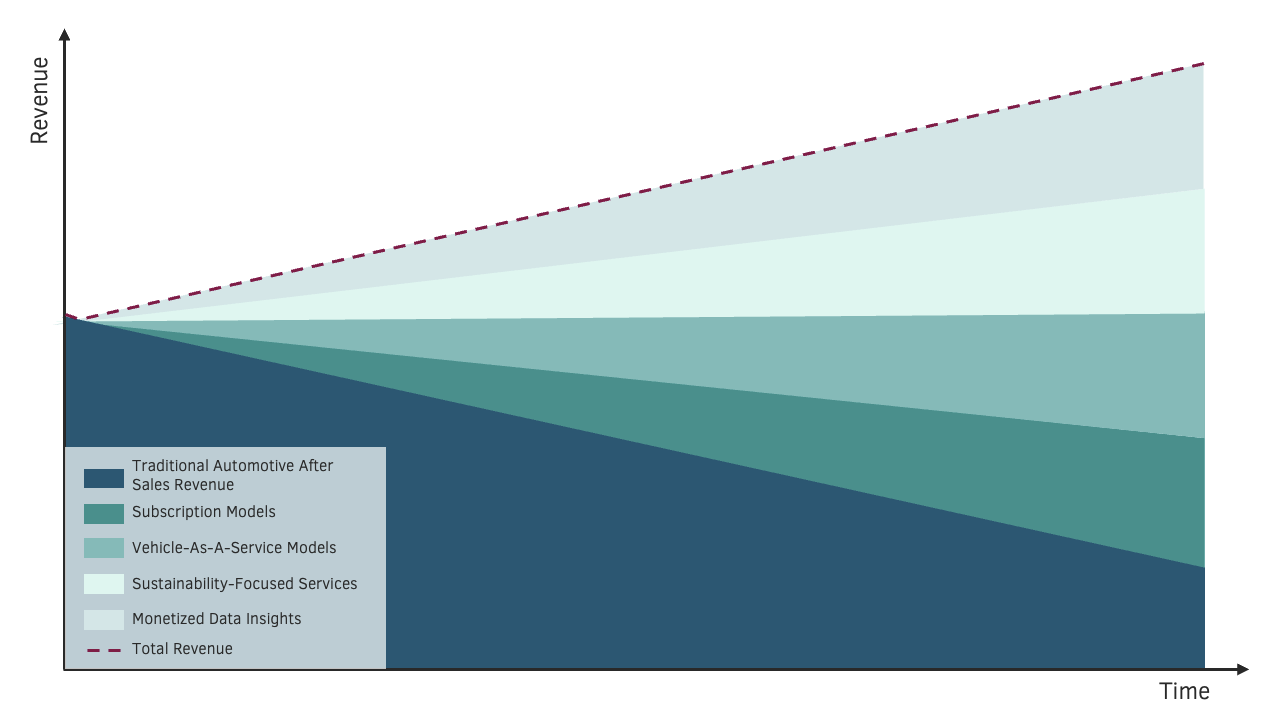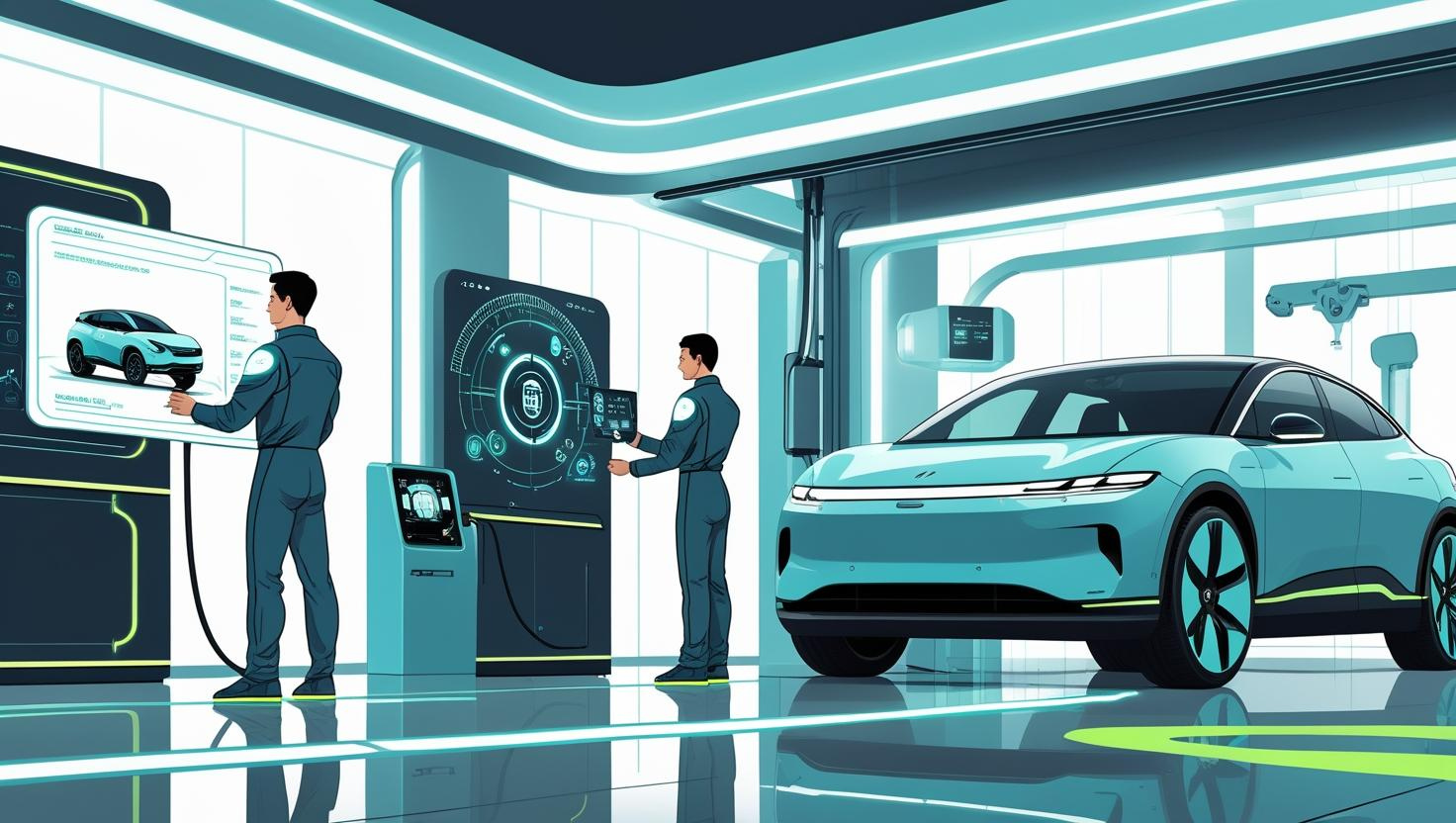The automotive industry is at a critical juncture. Geopolitical tensions like ongoing conflicts, economic instability, regulatory shifts, and fast-paced technological change are pushing traditional after-sales models to their limits. For Original Equipment Manufacturers (OEMs), the real question is not whether to change but how quickly they can adapt. Those who lead through this disruption will set the pace for the future; those who don’t risk being left behind.
For example, renewed tariff threats on imported auto parts remind us how easily long-standing revenue streams can be destabilized by shifting geopolitical forces. The need to rethink after-sales is urgent, not just a future consideration.
Core Challenges Disrupting the After-Sales Status Quo
Today’s instability is a constant backdrop. Ongoing conflicts, rising inflation, and tariffs disrupt supply chains, driving up costs. Stricter emissions regulations and the rise of electric vehicles (EVs) are reshaping after-sales.
EVs require less routine maintenance, reducing traditional service revenue. At the same time, Mobility-as-a-Service (MaaS) trends are weakening traditional touchpoints, pushing OEMs toward more flexible, digital-first models.

Figure 1: Current Challenges for the Automotive After Sales
As vehicles become more connected, service needs are shifting from oil changes to battery health, software updates, and thermal systems. Remote diagnostics and over-the-air updates reduce workshop visits, requiring OEMs to stay connected to customers in new ways. Meanwhile, the shortage of skilled technicians and rising customer expectations add internal pressure.
The impact is clear: workshop visits are down by 30%1,2, and revenue per vehicle for EVs is dropping by up to 70%3,4. OEMs must shift their models or risk losing a key revenue stream.
Disruption Creates Opportunity
While the challenges are significant, they present an opportunity. To overcome them, OEMs need to rethink traditional models, embrace innovation, and build more resilient, digital, customer-centric systems. With the right approach, disruption can fuel growth and innovation.
Pathways to Resilience and Growth
Building resilience begins with investing in people. As experienced staff retire, OEMs must preserve knowledge and focus on upskilling teams. Training programs can help manage the evolving needs of electric mobility.
Expanding Customer Engagement
OEMs must expand engagement beyond traditional drivers to emerging customer segments like fleet operators, insurance companies, and ride-hailing platforms. These customers require scalable, data-driven support. Mobile units, tailored maintenance packages, and omnichannel platforms powered by real-time data can help OEMs stay relevant.
AI will play a pivotal role in this transformation. Predictive analytics can forecast service needs before they arise, enabling personalized outreach. AI-driven platforms can optimize fleet maintenance, reducing downtime and costs. To succeed, OEMs must ensure data security and ethical practices alongside AI adoption.
Unlocking New Revenue Streams
OEMs need to look beyond the traditional repair-based model for new revenue streams. Subscription services, tiered maintenance plans, and intelligent upselling strategies driven by customer data offer steady income. Sustainability-focused offerings like battery diagnostics and green servicing help OEMs stay ahead of evolving regulations.
There’s also untapped potential in vehicle data. OEMs can monetize insights for fleet operators and insurance providers, while new models like vehicle-as-a-service (VaaS) open fresh revenue opportunities. Cross-industry partnerships can help OEMs integrate these services into their core business strategy.

Figure 2: The Shift in Automotive After Sales Revenue Streams
Digitalization as a Competitive Advantage
Digitalization is not just about compliance; it’s a strategic advantage. From remote diagnostics to app-based communication, digital tools create new touchpoints and improve relationships. OEMs that integrate these technologies into a unified ecosystem will set themselves apart, offering seamless, customer-centric experiences. AI-driven service advisors and real-time feedback will define the next wave of customer interaction, driving loyalty and enabling predictive service.
Building a Resilient, Agile Supply Chain
Future-proofing the supply chain is essential. Global disruptions show that after-sales resilience is tied to agility in procurement and logistics. A robust multisourcing strategy, supported by localized hubs and dynamic pricing, helps maintain continuity. Digital tools for inventory tracking and demand forecasting transform the supply chain from a point of vulnerability into a competitive strength.
From Service Arm to Strategic Pillar
In today’s fast-changing world, after-sales must evolve from a service function into a strategic pillar. The challenges are real, but so are the opportunities. OEMs must stop clinging to outdated models. By investing in people, embedding AI responsibly, expanding partnerships, and embracing digital ecosystems, OEMs can turn disruption into differentiation – with the right guidance and a willingness to embrace transformation.

Theresa Lindauer
Associate
1 Everything You Need to Know About Servicing an EV | WIRED
2 Electric vehicle owners spending half as much on maintenance compared to gas-powered vehicle owners, finds new CR analysis
3 EV Parts Aftersales Products and Services Challenges in 2023
4 How Electric Vehicles Impact Aftersales Services | Hicron Software

 ISO/IEC 27001:2013 certified
ISO/IEC 27001:2013 certified